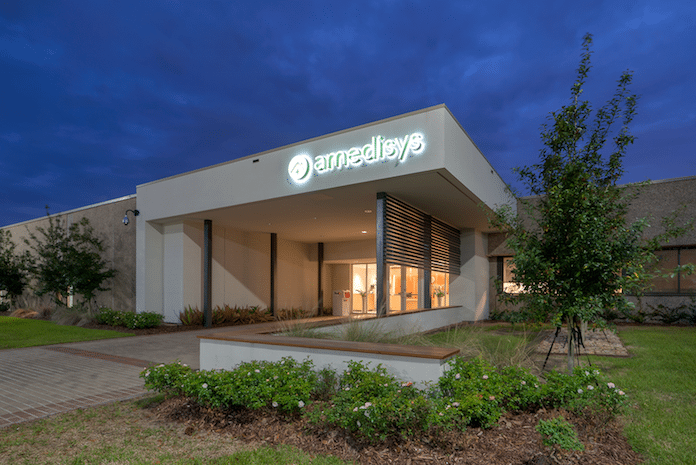Labor shortages reduced clinical capacity for Amedisys (NASDAQ: AMED) during the summer months, which slowed hospice admissions growth during the third quarter.
Labor headwinds bit into the company’s ability to take on patients, resulting in only a 1% increase in same-store admissions during Q3, coupled with a 1% decline in its average daily census.
“As staffing got tighter on our clinical side, it started to impact hospice,” CEO Chris Gerard said in a Q3 earnings call. “It was something that we were monitoring, but it kind of came up late in the summer that we have markets that we really were unable to take patients, or we were slow rolling admissions because of staffing capacity and having to draw up some contractors as well.”
Another contributing factor was a drop in the flow of candidates for employment during Q3.
These constraints led to slower-than-expected hospice growth during the quarter. The company’s hospice segment brought in $198.7 million in net service revenues during Q3, up from $197.5 million in the prior year’s quarter.
Amedisys was “caught off guard” by some of these developments during the summer, Gerard said, but now the company has plans in place that should alleviate some of these pressures.
Among those initiatives is to bring down turnover among business development representatives, including better matching their skillsets to the company’s needs. Amedisys is also offering employees enhanced benefits packages that include more flexible clinician schedules, among other changes to their recruitment practices, Gerard indicated.
The company is already seeing some improvement as it enters Q4.
“We are seeing now that we’re having some net increases [in job applicants], happening so far in October from an offers-made perspective. We’ve had four straight weeks of 200 offers made and accepted in the field, which is a record high for us,” Gerard said. “And our clinical capacity is expanded on both the home health and the hospice side. Clinical capacity is going to be our secret for success on both lines of business over the coming years.”
Other factors also impacted hospice revenue. Much of the 2.7% Medicare rate increase for 2022 was offset by the return of sequestration, and cost-per-visit increased 62 cents due to wage inflation and sign-on and retention bonuses.
Amedisys has implemented cost-control measures that the company expects to generate at least $20 million in savings during 2023.
The home health and hospice provider also has no plans to slow down on acquisitions, citing a robust pipeline of forthcoming deals across each of its business lines.
Also, going forward, Amedisys anticipates that expansion of its Medicare Advantage business on its home health side — as well as a new model for joint ventures — will be engines for growth.
The company recently announced an “innovative” contract with a large Medicare Advantage plan operated by the CVS Health (NYSE: CVS) subsidiary Aetna, Gerard said.
Through this agreement, the plan will pay Amedisys at a flat rate per admission until the patient is discharged. A portion of that rate will be tied to specific quality metrics, such as hospitalizations rate and timely initiation of care.
According to industry analysis, agreements like these can have a big upside.
“As broader MA enrollment grows and contributes more of the volume growth for home nursing providers, it is imperative for AMED to have contracts with key payors that pay adequate rates,” Brian Tanquilut, equity analyst for Jeffries Financial Group, indicated in a research note. “We see the Aetna contract as one that would boost AMED’s non-episodic rates and margins, as well as growth.”
The company also expects further investment in joint ventures, including those associated with its subsidiary Contessa Health.
Contessa is already involved in numerous JVs with health systems, but a recent deal represents an exemplar for a new model.
Earlier this month Contessa launched a JV with the University of Arkansas for Medical Sciences (UAMS). The venture is designed to provide a “full spectrum” of home-based care services, including primary care; hospital-at-home, recovery, and rehabilitation services; home health, and palliative care.
“Our next frontier of growth will be productizing all of our services into a package that allows patients to be cared for in their home regardless of their payer or their disease state to significantly reduce the cost of care for our payer partners — and allows Amedisys to be fairly compensated for the outcomes we deliver,” Gerard said. “We think that that’s the profile of joint venture partner that we’ll be targeting and that we’ll be working with going forward.”
Companies featured in this article:
Aetna, Amedisys, Contessa, CVS Health Corporation, Jeffries Financial Group, University of Arkansas Medical Sciences



